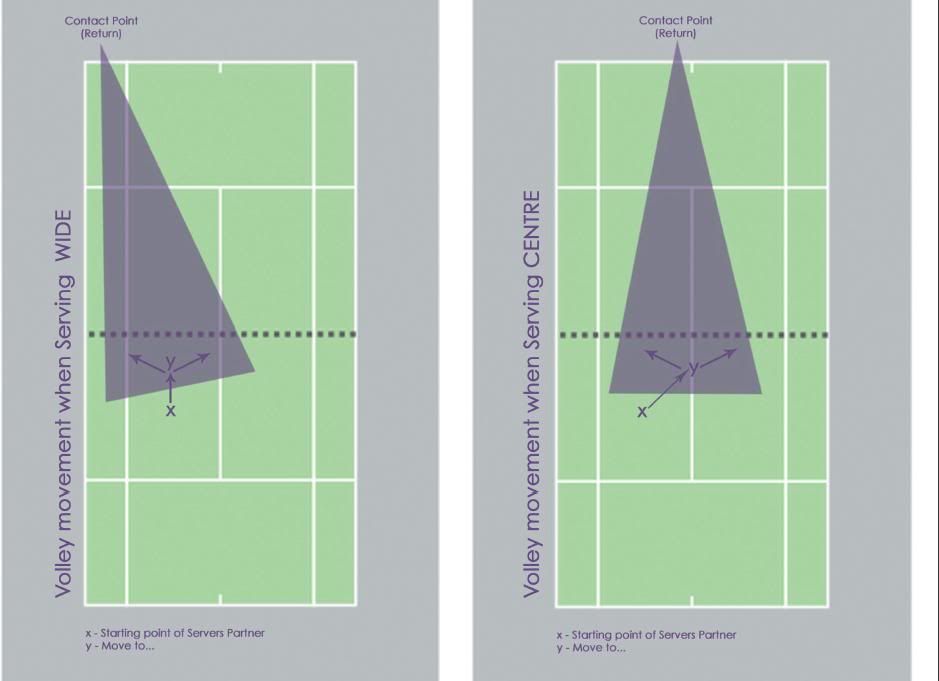Papa,
his basic question maybe different.
Basically one can ask-how do you draw/determine/establish a triangle
for a returned of a serve.
One of drawings above gives some pointers.
I am a bit hesitant to bust in because it is basically your thread.
Well, I didn't start this thread, never encouraged anyone else to start it, so I guess anyone can say what they like.
For sake of simplicity and ease of demonstration my triangles can be shown in one or two ways depending on skill level we're dealing with. If were just trying to get the general point across to the players where these areas exit I can have all the triangles begin and end on one side of the court. Driving home the concept is, in my opinion, the goal of this entire process and keeping it simple seems to stick.
However, my more advanced approach, which is a little bit more involved has the triangle apex extending to the shot itself. I still keep this all on one side of the net (I do not extend ropes through the net) but have two pivot points instead of the one - not complicated to line up. Still is easy to work but a little more realistic of actual shot projections/possibilities and designates coverage a little better.
If I can get players to see/understand the triangles/zones than I don't hesitate to get to it. I have it all attached and using the same setup, I can go from one pivot point to two in a matter of seconds. If I'm demonstrating doubles with this approach, I have four moving pivot points - singles I would have two. If I'm just trying to demonstrate the concept I really only need half the pivot points.
I hope everyone understands that I'm not trying to teach geometry but rather have players understand their own positioning (offensively and defensively), where opportunities exist & their percentages for their own shots and those of the opponents, how the court is constantly changing requiring them to change with it, and so forth. Could you get a transit out and figure out these things perfectly, maybe so but that isn't my goal.
As I've said before my primary goal is to allow newer and intermediate player to see the court like the better players do. This is not an exact science but rather a concept that I believe allows players to grow & play faster/better, gain confidence in their decision making and enjoy the game more. I've never claimed that very advanced players need to learn this because, whether anybody likes it or not, they already know it and think this way - just that simple.

